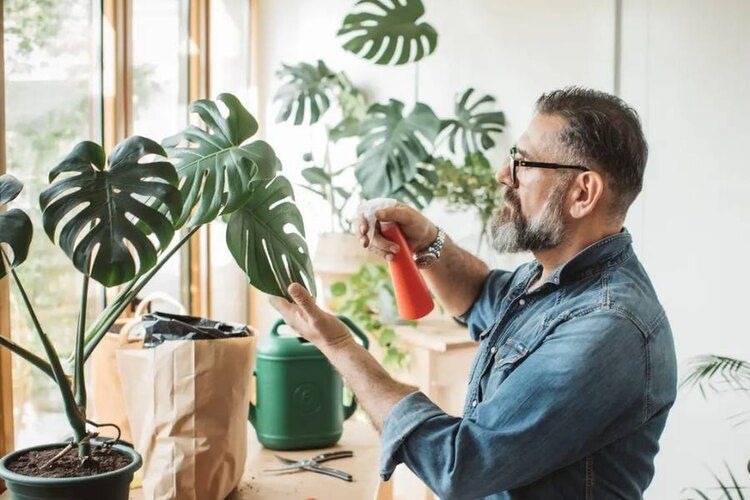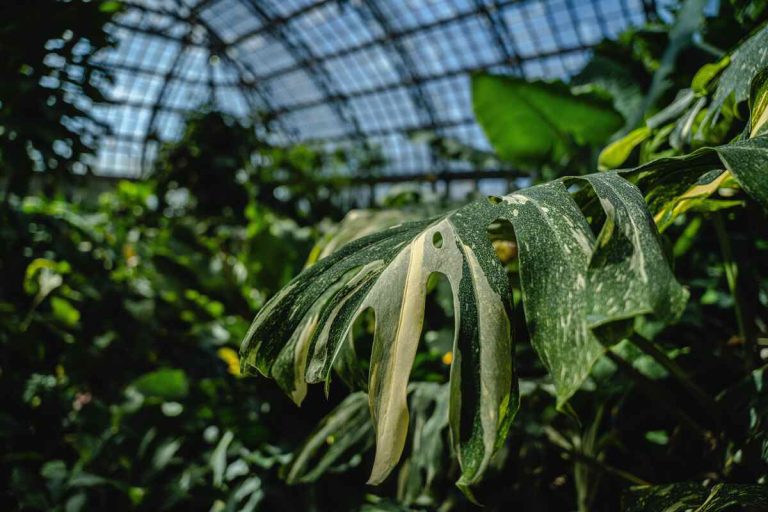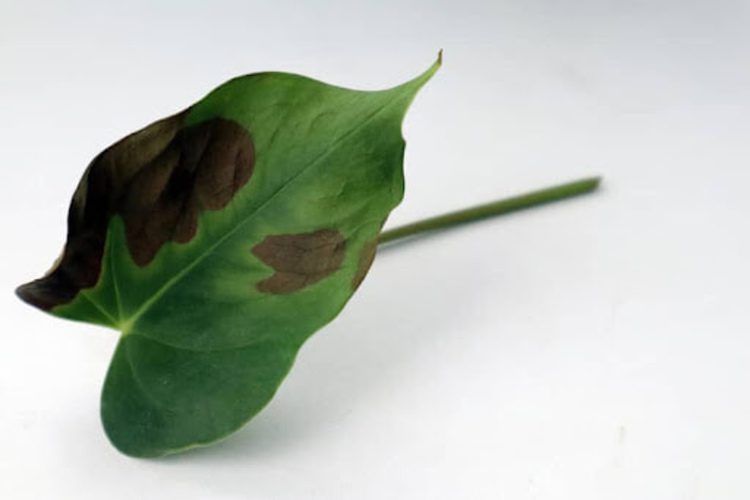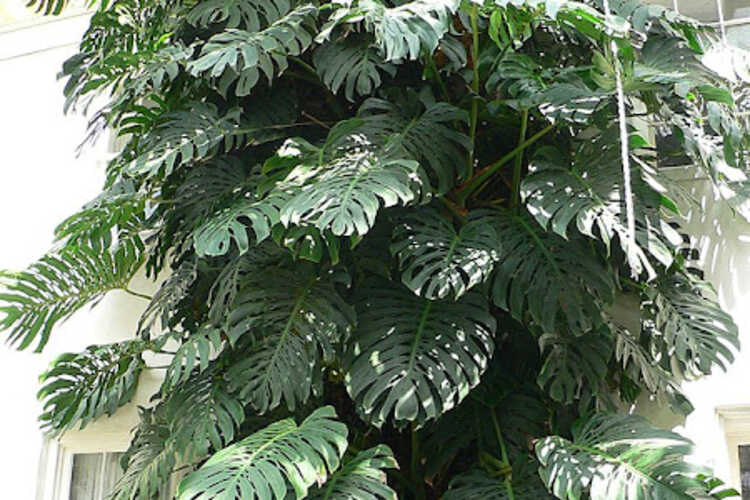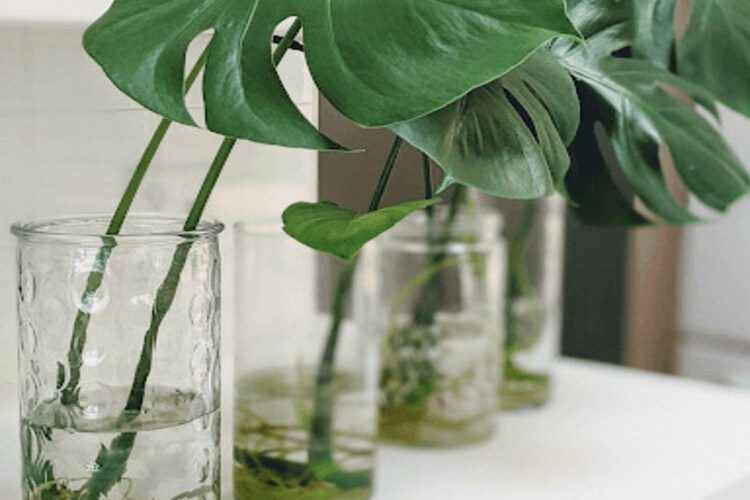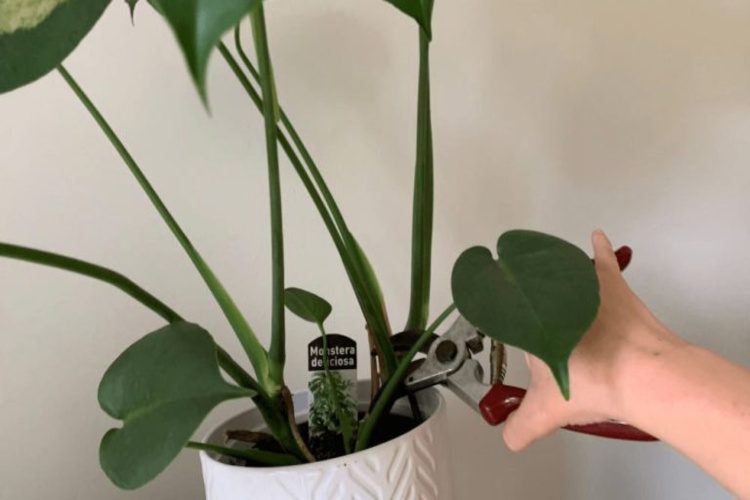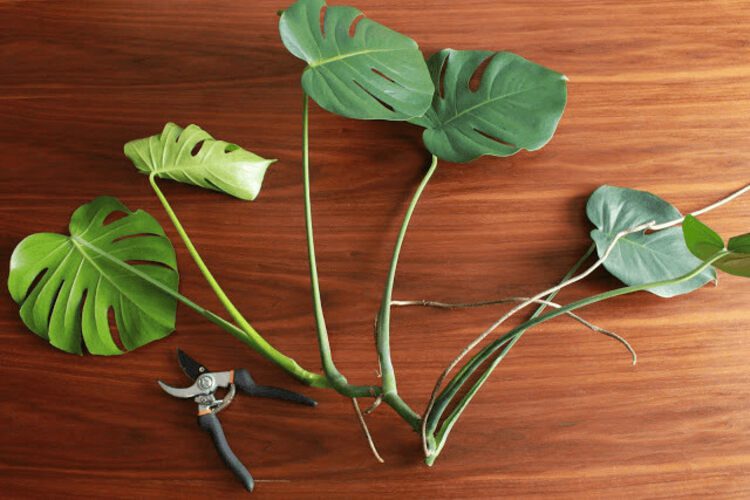Why Are My Monstera Leaves Turning Brown? 6 Main Causes
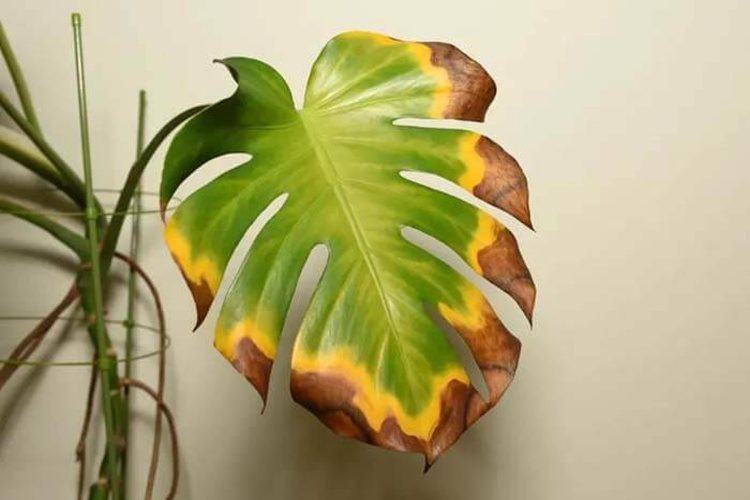
You are familiar with the pleasures of owning a healthy Monstera if you are a member of the club. A low-maintenance and incredibly satisfying houseplant is the Monstera. Its glossy, punctured leaves rise and unfold into a scroll-like shape. Given the correct circumstances, even the smallest Monstera Deliciosa may grow into a luxuriant plant very quickly. But what if your Monstera leaves are turning brown? Let’s find out together!
Why Does Monstera Leaves Turning Brown?
If you’re questioning why your Monstera’s leaves are browning, it can be an indication that something isn’t right with your houseplant’s environment. Although there are several causes for browning on the leaf, the manner in which you water, the humidity level surrounding the plant, and an excessive quantity of fertiliser in the potting soil are the most likely culprits.
Watering faults
Brown spots on leaflets are commonly a reminder that you should reconsider your watering practises. Monstera leaves turn brown, which is a sure sign that a plant has been overwatered, mistakenly dried out to a high extent with low humidity before the next watering, and then received only a drizzle. So, dry soil should be avoided, as should wet soil.
Except for succulents, which require sparing watering, most indoor plants demand a consistent source of moisture. The ideal approach to watering a houseplant is continuous, as opposed to soaking it thoroughly one time and then slightly the next. Adding water until you see it draining out of the drainage holes is always a good idea. After that, be sure to drain the saucer to prevent the pot from standing in moisture. It will lead to an entirely new set of issues by rotting the roots. Besides, you should pay attention to whether your plant is root-bound status or not.
Poor lighting
Your Monstera won’t have enough brightness to survive if there is insufficient illumination. The plant will thereafter get exhausted, and its leaves will begin to deteriorate. The edges of the leaves will first begin to brown, and as it progresses throughout the leaf, the leaf will droop and finally die.
Ensuring your plant has sufficient sunlight exposure will be essential to resolving this Monstera problem. Moving your plant to a more medium light-filled area is the simplest way to do this. If this isn’t possible, think about getting a growth lamp to put near your plant so it can get the additional energy it needs.
High temperature
Your Monstera is used to temperatures of 68–86 °F (20–30 °C) because it is a tropical plant. Your plant may get brown due to an abrupt temperature shift or exposure to severe weather. The browning phenomenon of the leaves is caused by the delicate leaf cells being harmed by a quick drop in temperature.
The extent of the harm will depend on how long the plant was exposed to the heat. If they are placed on the balcony or outside the room, direct sunlight can severely damage the leaves and the entire plant. In addition, the leaves are harmed by the direct airflow from the air conditioner’s chilly bite. Placing the plant near windows is another way to get it hot; however, this may harm the plant if it gets scorching hot. Monstera plants may also exhibit the Monstera’s dripping water phenomenon, which is a natural process that occurs when the plant’s leaves release excess water vapour. This is not harmful to the plant and can be seen as a sign that the plant is healthy.
Natural process
Another safeguard is the inevitable onset of plant death as plants age. The plant’s natural life cycle merely dictates that older leaves will ultimately fall off. Typically, the tree’s larger and lower leaves start to turn yellow and die.
And if you think the plant isn’t getting enough vitality, you may either turn it off as it begins to fade or leave it on until it’s mostly turned yellow. As long as the rest of the Monstera plant is growing and healthy, this should only be considered a normal part of its growth.
Over-fertilization
Brown leaves on the Monstera are a natural consequence of over-fertilizing. Over-fertilizing your Monstera plant will cause it to demonstrate certain symptoms, like leaves that become brown or worse, black tips or edges. There is a chance that your plant will simultaneously show signs of excess and lack of nourishment because excessive amounts of fertiliser can destroy plant roots, making it difficult for your plant to take in nutrients and water. Consequently, your Monstera may display signs like yellowing or browning of the foliage.
Pests/diseases Infestation
Foliage yellowing is a typical sign of several plant diseases. The following illnesses that harm Monstera plants and how to treat them are listed: Eye spot disease, also known as Spilocaea oleaginous, is a fungal illness that affects the leaves and causes hairy, brown patches that eventually cover the entire plant. The patches will have an irregular shape and become darker as they approach the centre. Applying a fungicide to the plant and adjusting your plant’s drainage or watering schedule to compensate will remedy this, which is typically caused by too much moisture in the soil.
Another fungus that affects plants, anthracnose, grows in leaf wounds that are already present. The illness is more likely to affect Monstera when the leaves are separating. The hue of the dots this fungus produces distinguishes it from others. The leaf will initially become yellow, after which it will turn brown. The contaminated leaf must be removed, and the remainder of the plant must be medicated with a fungicide in order to eliminate the ailment.
Read more: Scale on Monstera: 8 Tips To Get Rid Of This Nuisance
How to save the situation of Monstera plants?
Never overwater
Most individuals have a daily fixed watering routine that they faithfully adhere to without considering the state of the plant or the soil. To make sure that you don’t overwater your plant, it’s important to examine the soil’s condition.
Once the top inch or two of soil has dried off, water your Monstera again. However, if you notice that the soil seems to be remaining overly damp for an extended period, you might want to verify that the pot for your houseplant is the appropriate size. In addition to increasing the likelihood of water-related troubles, a container that is too small for the plant might also affect your Monstera plant.
Check the state of the lights
Monstera requires strong, indirect light to grow, as was previously indicated. When plants receive too much light, they may become burned, which can result in brown leaves and, in severe situations, plant death.
For this reason, if your plant is now close to a window, you should provide it with a sufficient amount and quality of light to keep it healthy. For instance, a Monstera would struggle in a southern-facing window, so think about transferring it to a different spot in your home. As an alternative, you might relocate it a few feet away from the window or cover it with a sheer drape to tame the light and improve the environment for your houseplant.
Supplying enough fertilisers
Just like every other crop, Monstera plants also require appropriate nutrients to survive. The right ratio of micronutrients is necessary for plants to thrive; they cannot only count on sunshine. Consider fertiliser, which supplies the vitamins your plant needs to function.
Conclusion
Browning Monstera leaves are frequently one of the first signs of a problem with this plant. Fortunately, most of the problems that lead to this may be fixed by making a few straightforward changes to your routine for taking care of your plants.
For more information, watch this video:
FAQs


